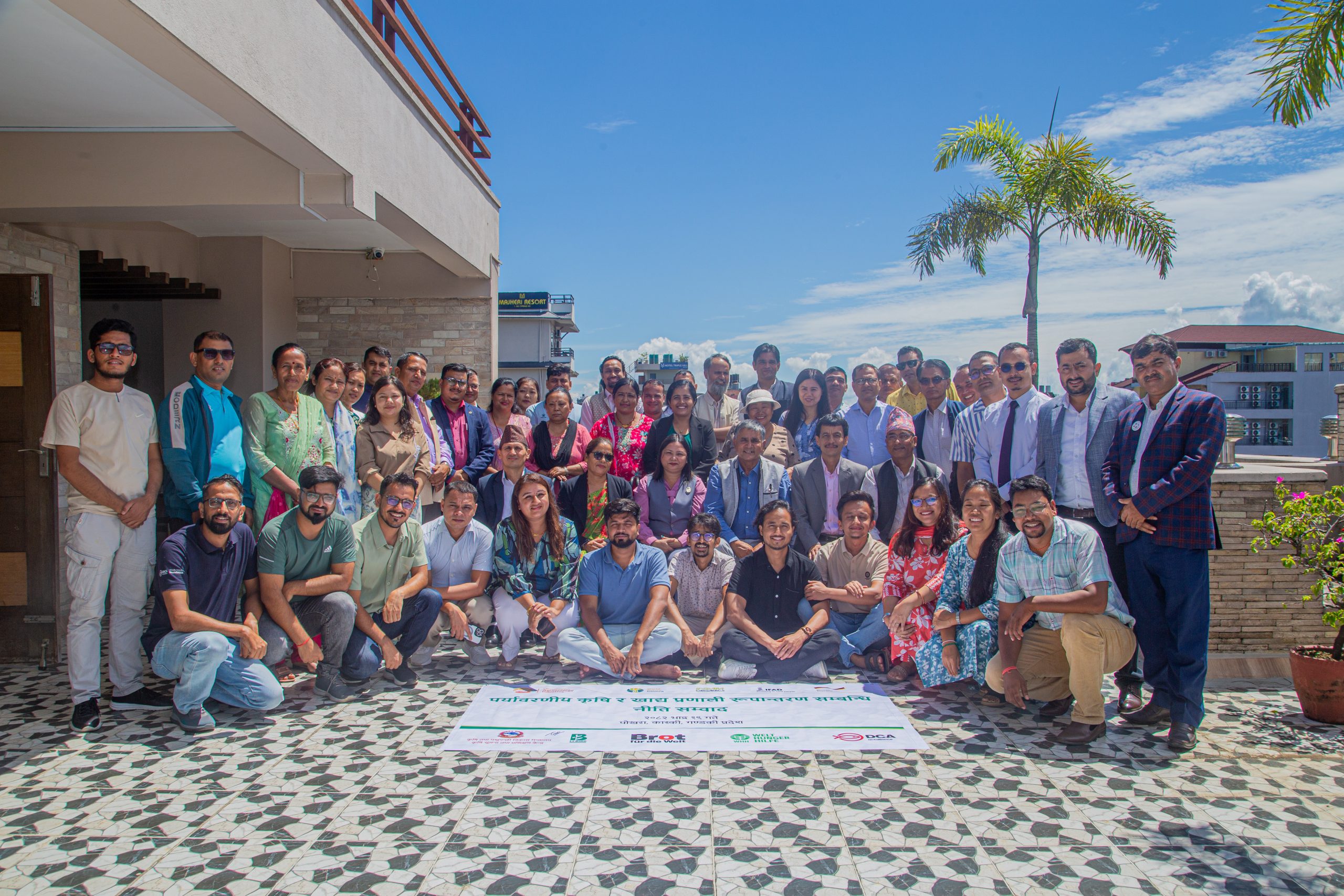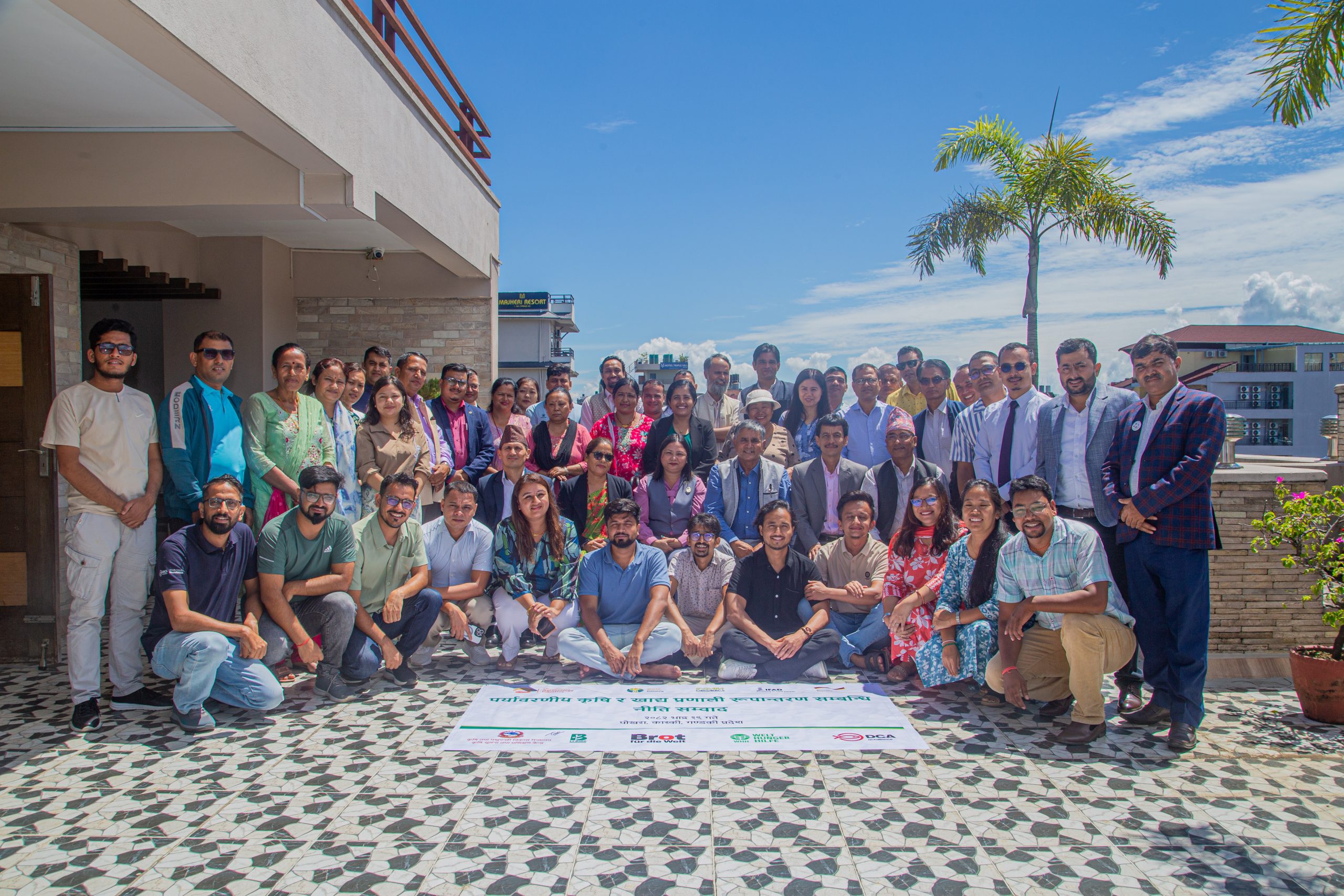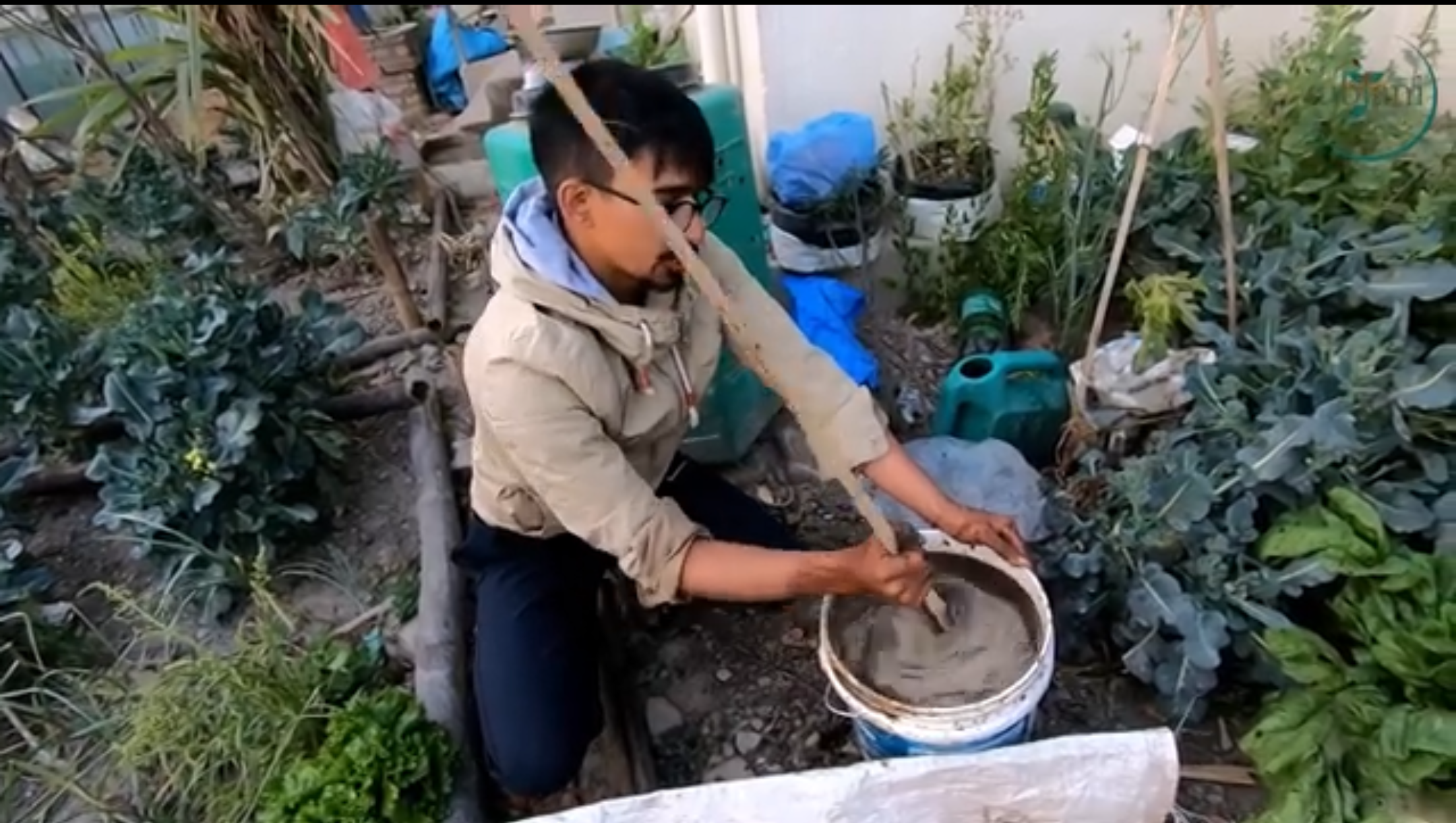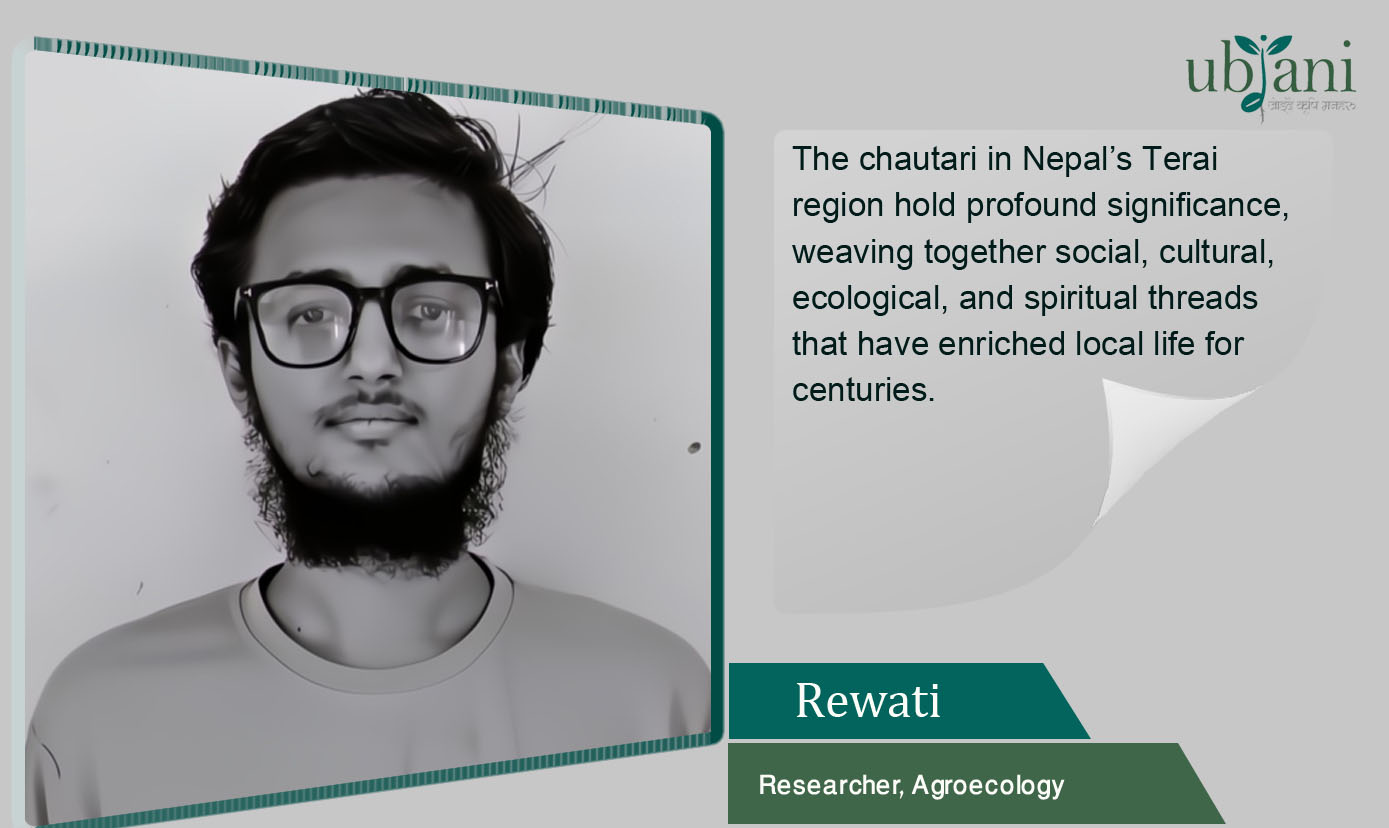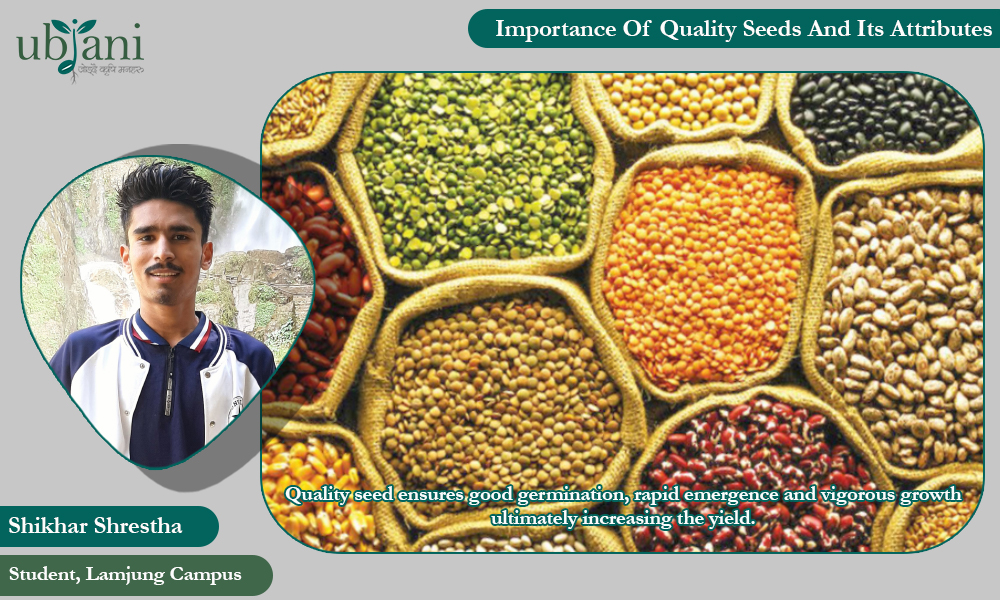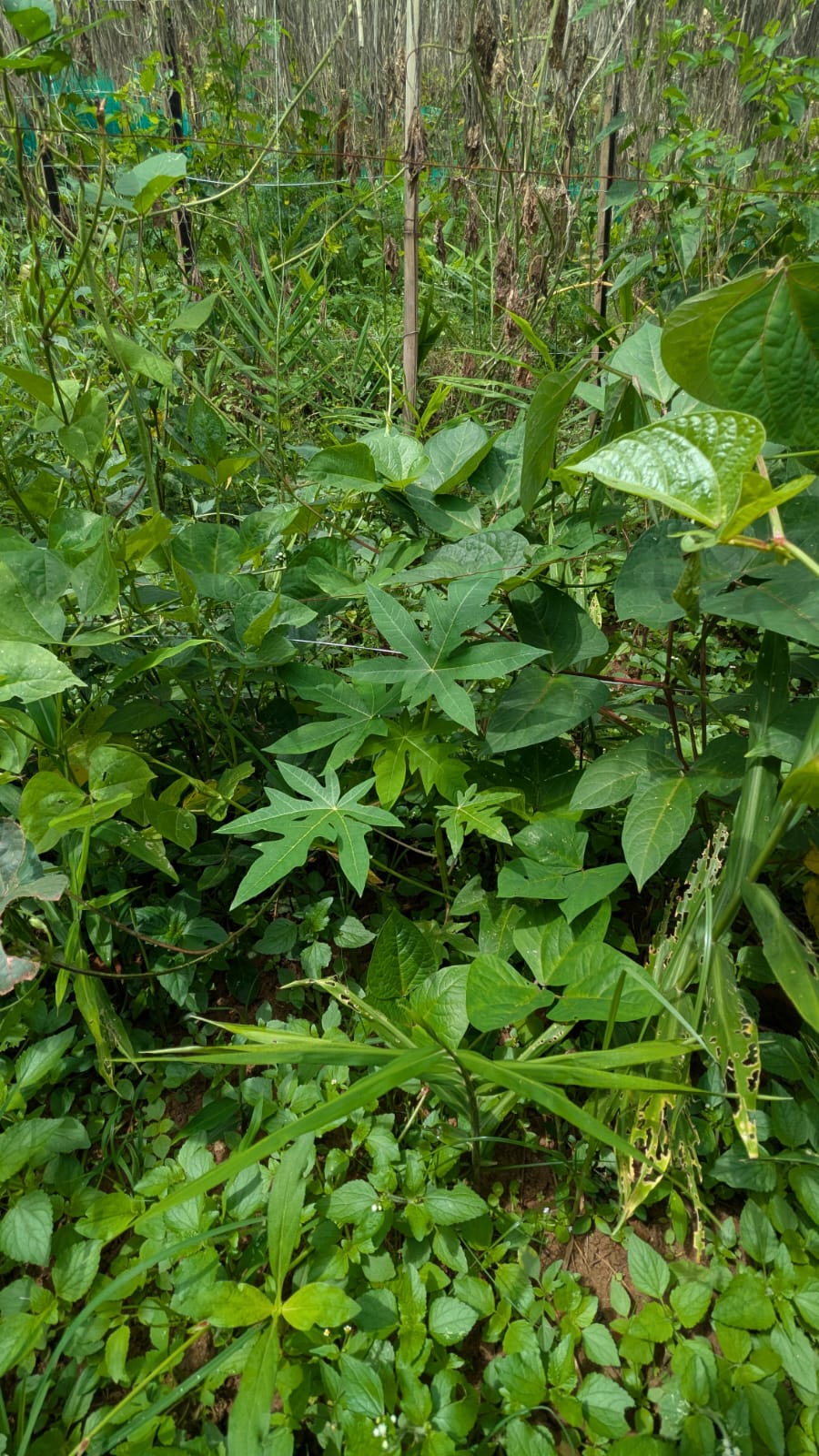

We are now living through the frightening disasters brought about by climate change. Weather indicators such as rainfall, temperature, wind, and relative humidity are no longer as we used to know them. Temperatures are rising. Long dry spells are followed by sudden bursts of rain. Winter has already been dry for years, but now even in the middle of the monsoon season, there are times when there is not enough rainfall to plant crops. Experts warn that such conditions will only worsen in the future.
In this situation, vegetable farming—which requires significant amounts of water—is facing one of its greatest challenges. In this article, we will discuss the Aakash Chaurasiya model of vegetable farming, a method that is both climate-resilient and free from chemical fertilizers and pesticides. I will also share our experience implementing this model on half a ropani of land at Ubjani Permaculture Farm.
What is the Aakash Chaurasiya Model of Vegetable Farming?
Aakash Chaurasiya is a young farmer from Madhya Pradesh, India, who developed a multi-layer organic vegetable farming system on a single acre of land. This gave birth to what is now known as the Aakash Chaurasiya Multi-layer Vegetable Farming Model. With high returns at low cost, this model is especially suitable and profitable for smallholder farmers. It makes the most efficient use of local resources, maximizes the potential of the land, and focuses on maintaining soil moisture and health. It is not only cost-effective and profitable but also environmentally sustainable.
The Principles of the Aakash Chaurasiya Model
If we look around us, where might we find the most fertile and productive land? Likely in the forest, where thousands of plants grow, flower, and fruit without the use of fertilizers, without weeding, and without being destroyed by extreme drought or flooding. Inspired by this, Aakash Chaurasiya developed his farming model by drawing on principles observed in dense forests:
Diversity – Just as a small patch of forest contains a rich variety of plant species, this farming model ensures diversity in vegetable crops.
No direct sunlight on soil – In a forest, tall trees filter sunlight so that only a fraction reaches the ground. Similarly, in this model, direct sunlight on the soil is avoided.
Multi-layer farming – In a forest, you might see tall trees like Sal, Khair, and Simal, vines climbing them, grasses on the ground, and root crops underground—all coexisting in the same space. The model follows this same principle of layered planting to maximize yield.
No bare soil – Just as forests have constant ground cover from plants or leaf litter, this system keeps the soil covered with crops year-round.
Encouraging biological activity – If you take forest soil in your hand, you will feel its coolness, and it will be teeming with life—both visible friends like earthworms and invisible friends like beneficial fungi and bacteria. This farming model fosters the same conditions by preventing direct sunlight, avoiding chemical use, and keeping the soil covered.
Maximum use of local resources – In forests, leaves fall, weeds grow and decompose, and animals, microbes, and earthworms turn them into natural fertilizer. Nothing goes to waste. This model also encourages using everything produced on the farm, making it highly economical.
How to Implement the Model (Our Example at Ubjani Permaculture Farm)
Land Preparation
Land preparation is the first step. Chaurasiya suggests doing this according to market demand so that crops can be harvested when prices are high. First, bamboo poles are placed for the trellis, with a spacing of 5 feet in rows and 6 feet between columns. In hilly, high-rainfall areas, contour bunds are made along slopes; in dry areas, bunds are made parallel to the slope to retain water. For ease of weeding and harvesting, 5-foot-wide bunds are recommended, with bamboo placed in the center. A bamboo height of about 9 feet works best.
Making the Trellis (Mach)
To prevent direct sunlight from hitting the soil—just as in a forest—a trellis is built. At 7 feet above ground, a wire net is tied to the bamboo, then covered with branches or straw in such a way that half the sunlight is filtered out.
Sowing and Planting
Once the trellis is ready, the soil is loosened with the application of organic manure. Root crops like ginger, turmeric, or yam are planted densely. Since these take about a month to sprout, the surface is also sown with mustard and coriander to avoid leaving the soil bare. Climbing vegetables such as cucumber, bitter gourd, bottle gourd, sponge gourd, beans, and cowpea are also planted. At intervals of about 10–15 feet, saplings of local guava are planted as perennial trees.
Harvesting and Selling
Within a month, coriander or leafy greens can be harvested. Pulling them out from the roots also helps aerate the soil. Climbing crops start producing within 1.5 to 2 months. Once they grow, they themselves provide shade, eliminating the need for a separate trellis in the following year. Root crops are harvested after about a year, and the cycle continues.
Our Experience at Ubjani Permaculture Farm
We prepared the land and built a trellis using straw.

Since the soil was extremely dry, we made holes and applied biochar soaked in Jivamrit, then planted ginger and turmeric.

Mustard and coriander were broadcast over the beds, and the coriander acted as a living mulch. Even when surrounding fields dried up for lack of water, our soil stayed moist.

Among the coriander, we planted climbing crops—cucumber, yardlong bean, bitter gourd, beans, and sponge gourd.

At about 15-foot intervals, we planted local guava saplings.

Our Yields
From just half a ropani of land, we harvested:
300 kg cucumber
120 kg bitter gourd
120 kg coriander
30 kg yardlong bean
25 kg beans
The ginger and turmeric are still growing beautifully.
How It Coped with Climate Challenges
When we started, the soil was extremely dry—so much so that people in the area could not plant maize due to lack of moisture. Our plot also had no water source. We brought in 400 liters of water from a neighbor just to transplant the seedlings. The densely sown coriander acted as living mulch, reducing evaporation, while the trellis prevented direct sunlight from hitting the soil.
Pest and Disease Management
Thanks to crop diversity, pest damage was minimal. For the first month, coriander’s aroma kept pests at bay; later, ginger and turmeric also deterred them. The only notable issue was fruit borer in cucumbers, which we controlled with pheromone traps. Abundant beneficial soil microbes, the microclimate created by the trellis, plenty of earthworms, and continuous use of Jivamrit meant there were few disease problems. Even plants that yellowed during extreme dryness quickly turned green again after rainfall.

What’s Next?
Our trial of the Aakash Chaurasiya model was a complete success. We are now preparing to expand it from half a ropani to 4 ropani. In the face of climate change, the severe health impacts of chemical fertilizers and pesticides, and the rising costs and losses in farming, we urge everyone to adopt the Aakash Chaurasiya model.


